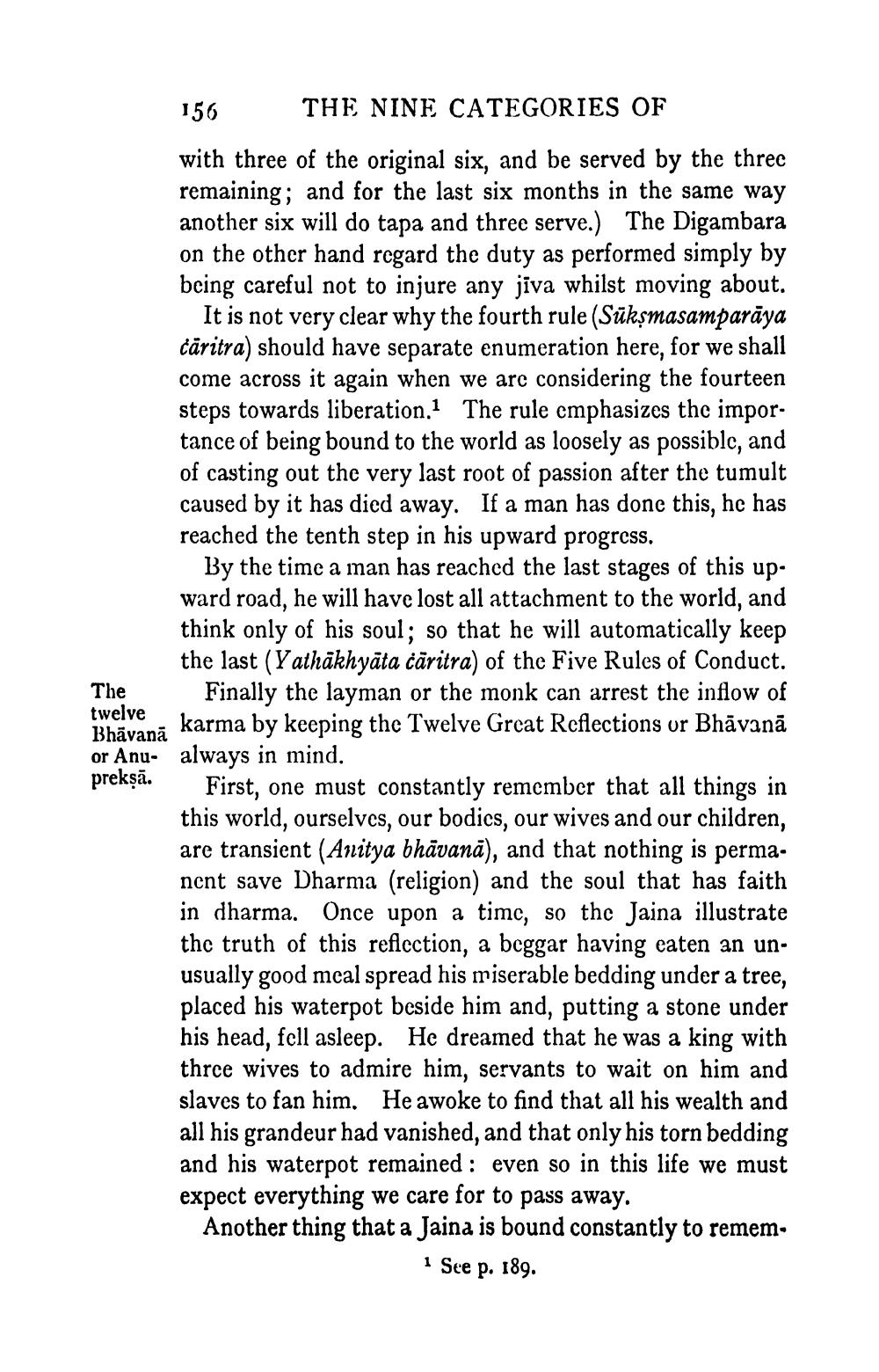________________
156 THE NINE CATEGORIES OF with three of the original six, and be served by the three remaining; and for the last six months in the same way another six will do tapa and three serve.) The Digambara on the other hand regard the duty as performed simply by being careful not to injure any jiva whilst moving about.
It is not very clear why the fourth rule (Sūkṣmasamparāya cāritra) should have separate enumeration here, for we shall come across it again when we are considering the fourteen steps towards liberation. The rule emphasizes the importance of being bound to the world as loosely as possible, and of casting out the very last root of passion after the tumult caused by it has died away. If a man has done this, he has reached the tenth step in his upward progress.
By the time a man has reached the last stages of this upward road, he will have lost all attachment to the world, and think only of his soul; so that he will automatically keep
the last (Yathākhyāta čāritra) of the Five Rules of Conduct. The Finally the layman or the monk can arrest the inflow of twelve Bhāvanā
na karma by keeping the Twelve Great Reflections or Bhāvanā or Anu- always in mind. preksā.
First, one must constantly remember that all things in this world, ourselves, our bodics, our wives and our children, are transient (Anitya bhāvanā), and that nothing is perma. ncnt save Dharma (religion) and the soul that has faith in dharma. Once upon a time, so the Jaina illustrate the truth of this reflection, a boggar having eaten an unusually good meal spread his miserable bedding under a tree, placed his waterpot beside him and, putting a stone under his head, fell asleep. He dreamed that he was a king with three wives to admire him, servants to wait on him and slaves to fan him. He awoke to find that all his wealth and all his grandeur had vanished, and that only his torn bedding and his waterpot remained : even so in this life we must expect everything we care for to pass away. Another thing that a Jaina is bound constantly to remem.
See p. 189.




